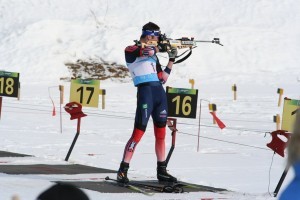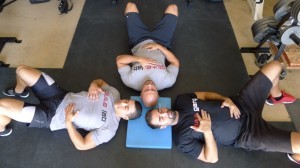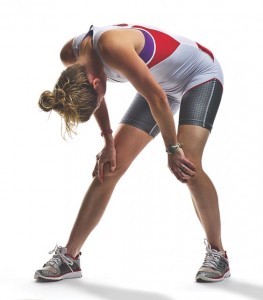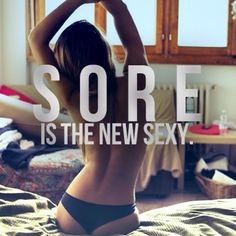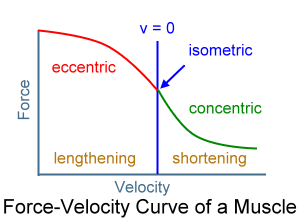When someone looks to get started with a health and fitness routine it's always interesting where they put the emphasis. Do they put most of their focus and effort on the training? Do they train as frequently and intensely as possible? Do they put their efforts into their nutritional plan? Do they make most of their meals? Drink more water? Do they focus on getting their sleep in order? Do they get to bed and get up at the same time daily? There are lots of things that will lead to a positive result. But often times we skip the one thing that is the most basic and can have a huge impact on results. Think back to the first thing and the last thing we'll do in this world. And that's breathing. Breathing is vitally important to everything we do. Yet it gets skipped over or forgotten completely. Which is surprising when we consider we can't go 3 minutes without it. Below are 4 quick ways we can use breathing to help our training or sports performance 1. Calm Our Nerves[caption id="attachment_5313" align="aligncenter" width="300"] Imagine trying to shoot a target with a racing heart rate. Think of the number of sports that require accuracy and precision. Imagine having to make an 8 foot putt in order to win a PGA tournament. Or having to make a couple of free throws with no time on the clock in order to win a basketball game. Or, the one I think that would the toughest, would be having to shoot targets from a standing position in a biathlon race.With all of these there would be benefit to slowing the breathing pattern and calming the nerves before having to perform. 2. Increase MobilityThese days everyone is looking to increase their mobility. They want to have greater stride length as a sprinter. They want to have greater shoulder...
How to Recover More Quickly
- Chris Collins
- Fitness
- Training
- Work-Out Recovery
- 1598 Hits
- 0 Comments
-
I've written before about the importance of breathing on this blog. But a recent session with a client caused me to think it may be worth revisiting. The session I am referring to was with a young client who was doing a vertical load of resistance exercises. This basically means he would do one exercise, move to a different second exercise and finish with a third exercise before taking a rest. This is different from horizontal loading, which is seen in many big box gyms, and involves doing a set of a particular exercise, resting for the prescribed amount of time, then repeating this to complete all the sets before moving on to the next part of the training session. Not only does vertical loading allow for greater workout density it also allows for greater intensity. You can train more intensely because you have more time from one lift until you repeat that same lift again. There are two other exercises plus a rest break before completing the next set of the same exercise. But this post isn't about program design. Instead it's to illustrate the importance of proper breathing during training. Now as you can imagine doing a workout of this type your heart rate will begin to climb. And if you are a little bit deconditioned, tired, under-fueled, dehydrated, stressed or coming down with a cold your heart may have to work a little harder than normal to do the task at hand. And as your heart rate climbs and you try to push yourself you may find you aren't recovering adequately to maintain the intensity and pace of your workout. Since safety precedes results you need an option here. Here's what we did for this client that helped him complete not only this set but the rest of...
An Easy Way to Be Better at Every Sport
- Chris Collins
- Fitness
- Training
- 1474 Hits
- 1 Comment
-
Do you remember growing up and having your parents drill into you proper manners? I'm talking specifically ones that had to do with your mouth. You know what I mean? [caption id="attachment_4312" align="aligncenter" width="300"] Poor manners cost him a lucrative pro career. 'Chew your food with your mouth closed' 'Don't smack your gum' 'Close your mouth' And besides helping me develop proper manners and etiquette so I won't be a social outcast this also helped me with my sports performance. So thanks mom & dad! But how exactly does chewing with your mouth closed help with sports performance? Well honestly it has nothing to do with the nutrition and more to do with how we take in oxygen and expire carbon dioxide. I've got to give credit to Mr. Sherwin, my high school science teacher, for teaching me some of the following. Below are 4 benefits of nose versus mouth breathing. Benefit #1 - Nasal air is warmed and humidifiedWhen you consider the location and properties of our lungs we know they are in the chest cavity and moist to facilitate inflation, deflation and gas exchange. The more similar the air we breath in is to this environment the better. For example, air taken in through the mouth needs to warmed and moistened before arriving at the lungs. ***I remember when going to university in Regina riding my bike in the middle of winter. In -35 C weather I learned that although you may be tempted to ride quickly to get out of the cold weather more quickly this caused me to breath through my mouth and typically was followed by a sore throat or chest cold. It was a better strategy to bike more slowly and keep my mouth closed. This allowed me take air in through my nose only and...
Stand Tall for Better Recovery
- Chris Collins
- Fitness
- Training
- Work-Out Recovery
- 1540 Hits
- 0 Comments
-
One of the great things about coaching is that there are plenty of opportunities to train. We never have an excuse for access to equipment. While it's nice to have access to kettle bells, Olympic platforms and anything that makes a session more enjoyable the truth is all we need is gravity for an effective workout. But besides that we're always getting exposed to new training methodologies and research. And so this can become our lab. This is the place we test our theories, see what works, what doesn't and how to make any changes if necessary. And just as the best part of our job is the people we get to work with this place is great in that we can usually find another coach to rope into a training session. Megan, Kayla, Graeme and Jordy all place a high value on training and are always up for the challenge as well. Recently when training with Megan and Kayla I noticed they were doing something at the end of each set. And it's something most of us do usually out of habit. [caption id="attachment_4253" align="aligncenter" width="263"] Kayla or Megan? Take your pick If this were a live presentation and I asked for a show of hands 'who bends over and puts there hands on their knees to recover?' almost 100% of the room would be reaching skyward. But there's a couple of problems with this. First of all let's take a look at what an ideal posture should be. And compare this to the common forward head posture many people have. [caption id="attachment_4254" align="aligncenter" width="300"] Ideal or forward head posture Now if you look at the bottom arrow of the picture on the right you can imagine this is close to where the pelvis would sit. The picture on the...
Train Smarter Not Harder
- Chris Collins
- Fitness
- Training
- Injury Prevention
- 1714 Hits
- 2 Comments
-
There seems to be a theme in fitness these days regarding intensity. Check out any number of YouTube videos or social media updates and they all seem to be tagged with descriptions of beast mode, strong is the new sexy or something similar. [caption id="attachment_4164" align="alignleft" width="236"] Seek results not soreness. Add to this the popularity of obstacle course racing where the greater the chance of serious injury the more people talk about it. Now no one seems to bat an eye to hear you've done a 10 km race. Unless it involved electrocution, possible hypothermia and challenged you completely in all areas physically. And for the right person at the right stage of their training this can be a great thing. But there are a lot of conditions attached there. This is not something for the person just getting started in fitness or is not already training regularly with a high level of intensity. So while you want to push the intensity and challenge yourself make sure you aren't overdoing it from the get-go or getting strong-armed into signing up for an event you aren't physically ready for. When you consider the injury rate at a Tough Mudder can be 20% you can quickly appreciate how many people are in over their heads when they step up to the start line. 15,000 at the start line and as many as 3000 injured is not a good statistic. Unless you are a physiotherapist than you may be glad to hear the phone ringing off the hook Monday after an event. So what are you to do? Play it safe and never enter these events? Or can you be a little smarter with your training and still push yourself, get great results and do some fun races? Absolutely you can. And the...
3 takeaways from Hawaii
I'm just finishing a vacation with my family in Hawaii. And it's been a great week to spend time together and relax. But even though I'm on vacation there are still times when I notice little things that will help me as a coach. Below are the 3 takeaways from my time in Hawaii. Slow down to learnIt seems as though everything in life is automatic and has to happen now. We can stream pretty much anything online without having to wait, do our banking in our pyjamas and have learned that we don't need to wait. While I was snorkelling near Waikoloa I would float over a some corral and not notice too much. I could very easily have changed directions, looked elsewhere or switched gears and grabbed a boogie board instead. But I waited and just floated there for a second. And a variety of life came out from hiding. Fish that had tucked under the corral or stopped moving to blend in with it assumed everything was safe. The amount of life, colour and activity that presented itself was amazing. It's all because I gave it 5 seconds to develop for me. Do the same thing with your training. Don't rush things. Be patient. Really learn to listen to your body, to the movement and to notice the subtle aspects of your training. Because if you're always in a race you'll miss a lot of the little, very important lessons right in front of you. There is always lots to improveAs you become more patient with your training you will notice more things that you can improve. Take breathing as an example. The complex where we were staying at had a gym. And by gym I mean a 10x10 foot room with a treadmill, bike, elliptical and a...
Yoga - Is It Good for Athletes?
Everything we do with our clients has to serve a purpose.The foam roll drills and stretches need to facilitate increased mobility. The nutritional plans need to provide the essential nutrients, energy and hydration. And the training plans need to fit the needs, goals and abilities of the individual doing the work.So I'm always curious as to why people go to yoga?A quick google search lead me to healthyyoga.com with the Top 10 Benefits of Yoga. Their list includes:1. Stress Relief 2. Pain Relief 3. Better Breathing 4. Flexibility 5. Increased Strength 6. Weight Management 7. Improved Circulation 8. Cardiovascular Conditioning 9. Focus on the Present 10. Inner Peace***I'll look at 4,5 & 8 below. The rest are fairly subjective and therefore difficult to measure.***There is no doubt that a number of people practice yoga but I'm always curious as to their reasons? I look at everything that our clients do as being beneficial and purposeful.And yoga has me perplexed.Because I hear constantly of the purported benefits of yoga. And especially the benefits it lends to sports performance.In fact there is power yoga which sounds like it would be perfectly suited to athletes that are seeking more power and to move more quickly.But power is the definition of the amount of work done per unit time. And work is equal to a force applied over a distance. So you need to move a substantial force quickly over some distance to train for power. Holding bodyweight poses for extended periods of time hardly meets the criteria for power development.Case in point India has one, count it one, individual gold medal in the history of the Olympics. Ever. And by the way that gold medal came in air rifle. Hardly a sport requiring power. Well, a powerful gun maybe :)In a similar sense to the...
